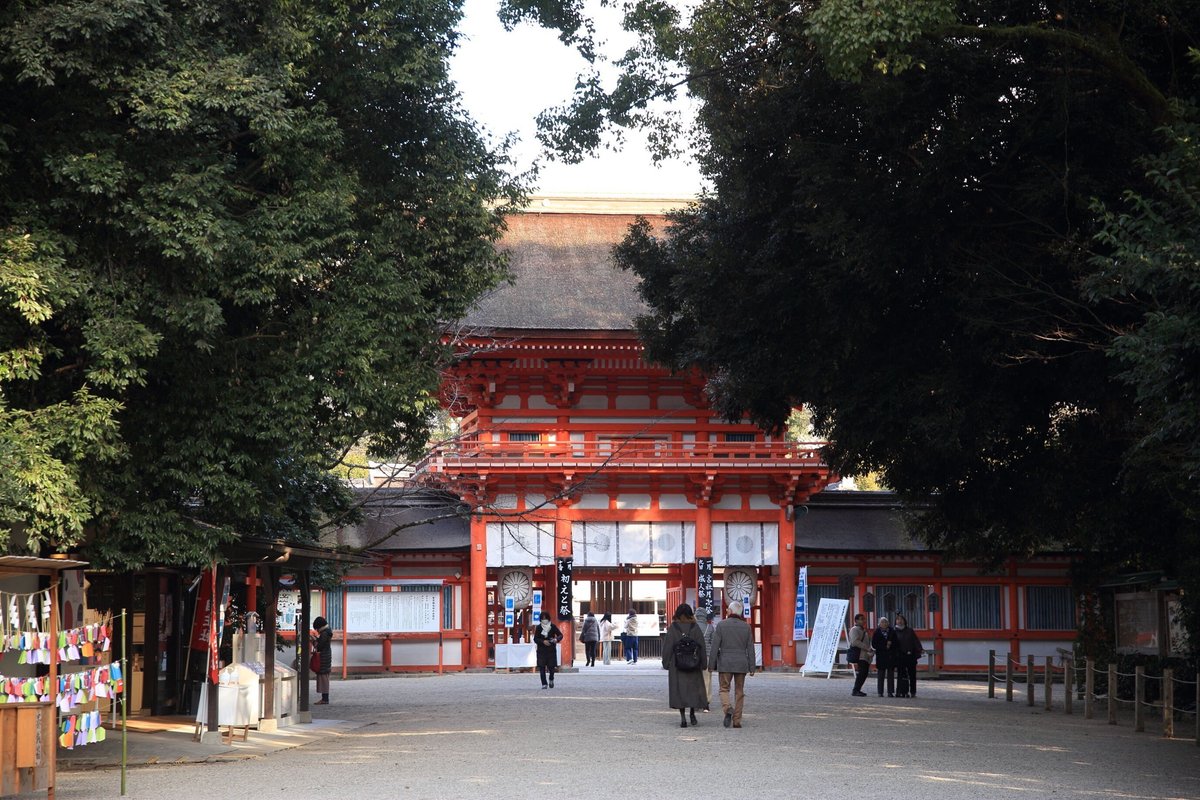
神社の中の茶屋編① 下鴨神社 休憩処 さるや
五穀豊穣の祈りを捧げた供菓を140年ぶりに復元。
鴨川と高野川の合流点は通称「デルタ」と呼ばれ、市民や大学生の憩いの場として親しまれている。そこから北へまっすぐ伸びた参道を進んでいくと、鬱蒼と茂った原生林「糺ノ森」に護られるかのように下鴨神社はある。
下鴨神社は正式名を賀茂御祖神社(かもみおやじんじゃ)といい、上賀茂神社(正式名:賀茂別雷神社(かもわけいかづちじんじゃ))とともに、賀茂氏の氏神を祀る神社である。その歴史は古く「鴨社造営記」と呼ばれる社記によれば、紀元前90年に端垣の修造がなされたとの記録が残されているという。都が京に造営されるよりも前からこの地に建っていた、京都でも最も古い神社のひとつであり、世界遺産にも登録されている。

Shimogamo Shrin
Saruya
A sweet offering for a rich harvest, revived after 140 years
The junction of the Kamo and Takano Rivers, known by locals as “the delta”, is a favorite spot for folks of all ages in Kyoto to hang out and relax. Follow the road extending north from the delta for a short while, and you’ll reach Shimogamo Shrine and Tadasu-no-Mori, the primeval forest that stands in the shrine grounds as if to guard this historical place of worship.
The formal name of the shrine is Kamomioya-jinja. Together with sister shrine Kamigamo Shrine (Kamowakeikaduchi-jinja), it’s dedicated to the tutelar deity of the Kamo clan. It has a long history, with a shrine record called Kamoshazōeiki including mention of a repair of a fence here in 90 BC. It is in fact one of the oldest shrines in Kyoto, and was established even before the capital was moved here. Today, it is designated as a World Heritage Site.

その下鴨神社では毎年5月15日(陰暦四月の中の「酉の日」)に葵祭が行われる。祇園祭、時代祭と並ぶ京都三大祭りのひとつで京都の人にとってはとても大切な例祭である。その葵祭の際に五穀豊穣の祈りを捧げる「神饌」として神前にお供えされていたのが「申餅」である。夜明けの空を一瞬染める“生命が生まれる瞬間の色”といわれる「はねず色」の餅が、邪気を払うとされる小豆を包んでいる。じっくりと煮出された小豆の出汁で搗いたもち米は柔らかく、粒だった小豆の食感を引き立てている。口に入れると仄かで優しい甘さがふわっと広がり、やがてゆっくり時間をかけて溶けていく。じつに素朴で上品な味わいだ。

Shimogamo Shrine holds the Aoi Matsuri festival every May 15th (traditionally, Torino-hi (the Day of the Cock) in the fourth lunar month), which along with the Gion Matsuri and the Jidai Matsuri, is one of the three big festivals on Kyoto’s annual calendar. In the past there was a custom during the Aoi Matsuri of offering a sweet called sarumochi to the deities to pray for a bountiful harvest. These sweets consist of a light reddish (hanezu-iro in Japanese) rice cake filled with azuki beans, the color of the rice cake symbolizing the birth of new life, and the beans believed to ward off disaster and misfortune. The rice cake is made with cooking water from the azuki, and so combines the softness of the mochigome and the texture of azuki. The moment you put a sarumochi in your mouth, you feel a sweet taste unfold before the whole thing slowly melts away. The taste is rustic yet refined.
申餅の名の由来は、葵祭の前日に天皇の勅使が下鴨神社を訪れ、下打合せをする決まりがあるのだが、その日が「申の日」にあたるため、勅使をもてなすためにお出しする餅を「申餅」と称したとされ、文献によれば少なくとも江戸中期にはその存在が確認されている。そうして代々受け継がれてきた申餅だが、明治維新の際に神社を統括する省庁の再編などの影響を受け、いったん姿を消すこととなってしまう。
The name sarumochi comes from this sweet having been served to an imperial envoy who visited the shrine to make preliminary arrangements the day before the Aoi Matsuri, which was Saru-no-hi (the Day of the Monkey). Although we have records of sarumochi existing at least up until the mid-Edo Period, the tradition disappeared when the shrine became the target of government institutionalization in the Meiji period.

Mr. Yasuhisa Furuta, president of Hosendo, a Japanese sweets shop that operates Saruya
それからおよそ140年の時を経た2010年のこと、葵祭や下鴨神社の歴史を彩ってきた食文化を現代に継承したいという宮司の思いと、近所で素材にこだわった和菓子を作り続けてきた宝泉堂の技によって復元。境内に設けられた茶店「休憩処 さるや」では、古代からの植生を伝える糺ノ森の原生林と、神の棲む場所ならではの神聖な空気に包まれた境内で食することができる。
ほかにも下鴨神社の御神紋である葵をかたどった最中や、神社境内に氷室があったことに由来する夏季限定メニューのかき氷などおすすめ。手を合わせ、祈りを捧げ、心を清めたあとで食べる由緒正しき甘味は、きっと幸福な味がすることだろう。

It was some 140 years later in 2010 that sarumochi were revived with an initiative by the shrine’s chief priest to recreate the food culture that had colored the history of the Aoi Matsuri, with the help of Hōsendō, a local sweet shop with a track record of producing sweets with the best selected ingredients. You can try sarumochi at Saruya tearoom, among the ancient Tadasu-no-Mori and the sacred atmosphere of this home of the gods.
Also recommended are monaka shaped like the shrine’s hollyhock emblem and the shaved ice (available only in summer) that became a tradition here as the result of the shrine owning an ice house when they were extremely rare.
After bringing your hands together in prayer and cleansing your heart at the shrine, these venerable sweets are sure to bring you a taste of happiness.

【住所】京都市左京区下鴨泉川町59 下鴨神社境内
【営業時間】午前6時30分~午後4時30分
【定休日】なし
【Phone】090-6914-4300
【Address】59 Shimogamo Izumikawa-Cho, Sakyo-Ku, Kyoto
【Open】10:00 am - 4:30 pm daily
【Phone】090-6914-4300
